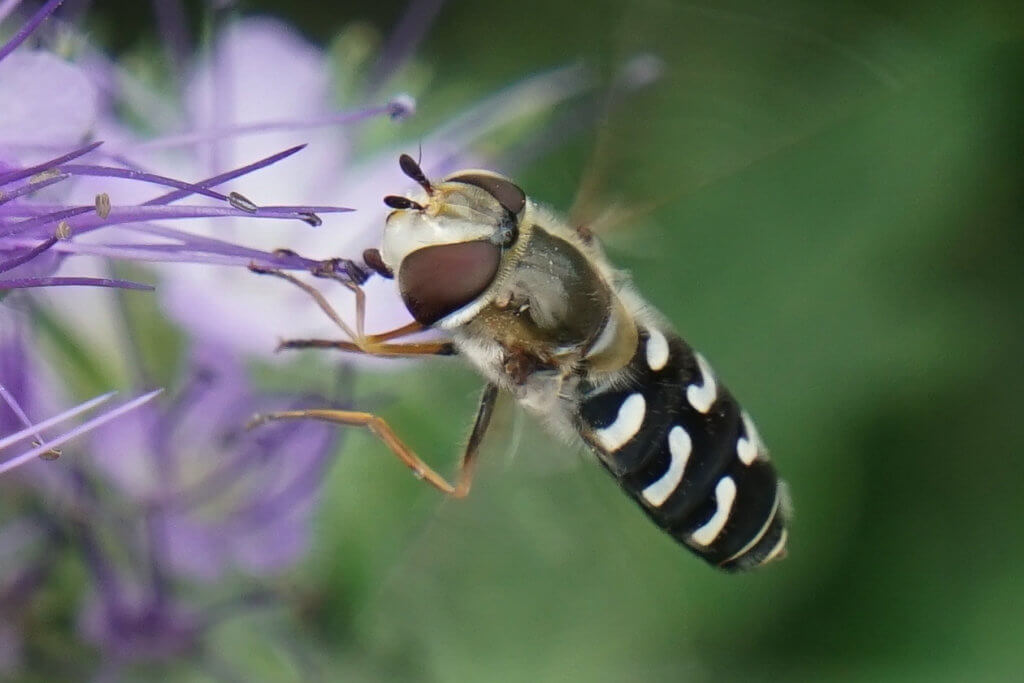
This is a great hoverfly to come across on a summer walk. In a good year it is widespread throughout England & Wales but more thinly spread in Scotland. It occurs in a variety of habitats where nectar rich flowers are growing. It is very active and an expert flyer, so is easily seen amongst flowers. Once seen, I like to watch a fly as it hovers above a flower for a while, maybe checking for a prime location, then it will drop down to its chosen spot and cling on, still hovering, whilst taking the nectar. This one is one of several which found some Tansy-leaved Phacelia that I had sowed onto a bit of rough ground next to my house, hoping to attract nectaring insects.
Scaeva pyrastri is one of the most easily identified hoverflies, with its white comma shaped spots and shiny black body. It’s quite large, with a wing length of up to 12.5mm. Numbers fluctuate hugely from year to year as it is a migratory species. It arrives in Great Britain in June, from central and southern Europe. 2017 was a particularly good year. Everywhere I went I came across one, whereas in 2016 I hardly saw any. It is a good garden visitor, feeding on a variety of flowers and is very visible when active.
[registration_form]